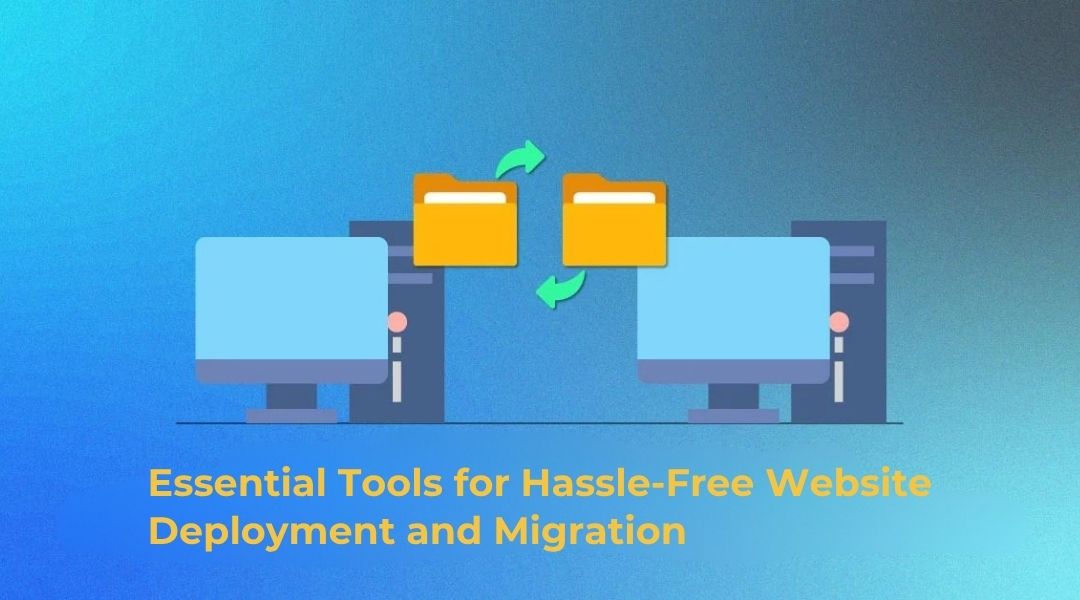
Deploying or migrating a website can feel like a high-stakes operation. One wrong move, and things can break—traffic drops, links vanish, or entire sections go missing. I’ve seen it happen. I’ve also learned how to stop it from happening. After nearly a decade in web development and server administration, I’ve built a reliable toolkit that helps me move fast and avoid disaster.
In this guide, I’ll share the tools and approaches I use to make deployments and migrations as painless as possible. Whether you’re launching something new or moving an established site, this will help you get it done without pulling an all-nighter or losing SEO rankings in the process.
What You’ll Learn
- Which tools I trust for smooth site deployment and migration
- How to prepare a website before moving it
- My process for checking everything after a transfer
- How to maintain SEO and site performance
- Real examples of tools that saved me time and trouble
My Go-To Deployment Tools
Git and GitHub Actions
This is where I start. Git is the backbone of everything I build, and GitHub Actions helps automate the boring parts—like tests, builds, and deploys. It removes the guesswork and helps me catch bugs before they hit production. It’s not fancy, but it works every time.
Netlify and Vercel
These platforms make front-end deployments almost too easy. Push your code, and they handle the rest—SSL, caching, CDN, and even rollbacks if something goes wrong. I use Netlify for static and JAMstack projects, and Vercel when I’m working with Next.js. The learning curve is minimal, and the results are professional.
Docker
Yes, I still use Docker. For more complex apps with back-end services or databases, Docker lets me build and test the exact environment the site will run on. No more “it worked on localhost” excuses. It also plays nicely with CI/CD systems if you want to get fancy.
Looking into building smarter, more reliable applications? I covered tools and frameworks that complement these deployments in my full-stack dev toolkit overview.
The Migration Tools I Actually Use

Duplicator
If you work with WordPress, Duplicator is a must-have. It zips up your entire site—files, database, configuration—and helps move it to a new location. It’s fast, reliable, and I don’t have to fiddle with manual exports unless I feel like it (I usually don’t).
UpdraftPlus
UpdraftPlus is my go-to for scheduled backups and one-click restores. It supports cloud storage and handles multisite migrations too. If you’re moving your site and want a built-in safety net, this plugin does the job without making you dig through logs.
Migrate Guru
Migrate Guru is designed to handle large websites—think hundreds of gigabytes. If a client hands me a massive WordPress site with lots of media and customizations, this is the first tool I turn to. It’s fast, doesn’t overload the server, and takes care of serialized data and URLs.
How I Prepare a Site for Migration
No matter how solid the tools are, a migration is only as good as the prep work behind it. Here’s what I do before every move:
Back up everything – Yes, everything. Not just the site files but the database, config files, and .htaccess rules.
Update software – I make sure WordPress, plugins, themes, or any CMS tools are current to avoid conflicts later.
Clean the site – I delete unused themes, inactive plugins, and spam comments. Fewer moving parts means fewer surprises.
Check for malware – A migration is a terrible time to discover that someone’s been injecting spam links into your footer.
Plan DNS updates – DNS propagation takes time. I plan ahead so there’s no awkward downtime.
Migration Pitfalls I Avoid Like the Plague
After doing this enough times, I’ve seen most of the common mistakes. Here’s what I steer clear of—and you should too:
No redirect plan – Always create a URL map and 301 redirects if page URLs are changing. Otherwise, search engines and users hit dead ends.
SSL problems – Your new host might not automatically recognize your SSL certificate. I test this before going live.
Missing media – Some migration tools skip media files or don’t fix internal paths. I always do a manual scan afterward.
Database compatibility issues – Mismatched MySQL versions or character sets can corrupt your data. Check them first.
Forgetting email setups – DNS moves can affect contact forms and transactional emails if MX records aren’t copied correctly.
I also keep a personal pre-launch checklist, which has grown over the years from “don’t forget the favicon” to full-on sanity protection.
What I Do Post-Migration

Once the new site is live, the job isn’t done. Here’s my post-move checklist:
Run through the site – I click every page, fill out forms, test payments, and even try the 404 page just to make sure.
Update DNS records – Including MX, SPF, DKIM—basically anything that keeps email flowing.
Test performance – PageSpeed, Lighthouse, or GTmetrix give a quick sense of how things are running.
Set up uptime monitoring – I use Uptime Robot to ping the site every five minutes. It’s simple, but it works.
Fix internal links – If any URLs changed, I correct links manually or with search-and-replace tools.
You can find more about how I approach scalable and modern builds in my breakdown of front-end, back-end, and full-stack development.
SEO: Don’t Let Your Rankings Sink
One of the biggest risks during migration is tanking your SEO. Here’s how I prevent that:
Run a pre-migration SEO audit – I use tools like Ahrefs or SEMrush to log current rankings, indexed URLs, and backlinks.
Set up 301 redirects immediately – Not days later. The longer you wait, the more ranking signals you lose.
Resubmit your sitemap – Through Google Search Console and Bing Webmaster Tools.
Watch for crawl errors – A few weeks after migration, I check index coverage and crawl stats to make sure search engines are happy.
Mini Reviews of Tools I Like

Duplicator – Perfect for developers. Handles WordPress sites like a charm. Downside? Some beginners may find its options intimidating at first.
UpdraftPlus – Great for automated backups. The free version is powerful, but full features require an upgrade.
Migrate Guru – Handles large sites with zero manual uploads. Excellent for complex environments, though it’s not as customizable as some might want.
And if you’re just starting to build your own dev portfolio, check out these full-stack project ideas to put your tools into action.
Wrapping Up
Deployments and migrations don’t have to be chaos. With the right tools, a solid checklist, and a bit of patience, you can move a site in record time without breaking a sweat—or your SEO. These tools aren’t just my favorites because they work. They’ve helped me out of more than one tight spot.
Need to dive deeper into building out your tech stack? My breakdown on how modern full-stack apps are built is a great next stop.
If you’re planning a site move soon—or just preparing for the inevitable—I hope this guide helps you avoid the mess and keep things running smoothly.
